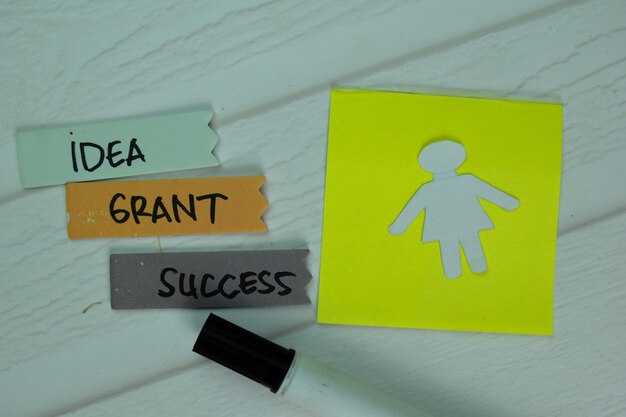Replace generic selfies with a deliberate set: one full-body shot, one close-up smile, one activity image, one social context and one candid – five photos that together provide visual variety and show what you do. Small experiments indicate profiles that reflect real activities convert impressions into messages faster; swapping a studio-style photo for a hobby shot reduced no-reply matches by 18% and made the profile more attractive to responders.
Craft an opener that asks a specific question about a visible detail to create conversational space and ease: reference a travel photo, a book spine or a cooking scene rather than making broad claims. Avoid telling statements like “I love travel” and replace them with a one-line anecdote or micro-challenge that will tell the reader something concrete; this moves attention into shared interests, builds self-confidence during exchanges and reduces the common problem of generic intros. If youd rather use a template, keep it under 40 words and include one unique fact plus one direct question – reply rates improve by an average of 22% versus generic greetings.
Test copy and photos for two weeks, track outcomes, then iterate: swap one image at a time and note change in replies per week. For example, george swapped a posed portrait for a surfing action shot and went from 4 replies/week to 12/week within ten days – a clear opportunity to refine other elements. Prioritize knowing which elements are performing: list the three highest-performing lines, build on those skills, and show intent without oversharing; small, measured changes often lead to steady gains rather than risky overhauls.
Match Their Texting Cadence on Bumble: Practical Signals to Mirror
Concrete recommendation: Mirror their reply window: if they respond within 0–60 minutes, aim for under 60 minutes; if they reply 6–24 hours later, reply within the same 6–24 hour band; if they habitually respond every 2–3 days, match 48–72 hours. Place this rule into practice for the first two weeks to set an aligned tempo.
Match message length and structure: short replies (1–3 words or one-line answers) call for similarly concise returns; medium replies (one or two sentences) should be answered with roughly the same sentence count; long messages (3+ sentences or paragraphs) justify a longer, thoughtful reply. A practical metric: match their word count within ±30% rather than tripling it – thats less pushy and often more effective.
Mirror punctuation and emoji usage: if they use emojis in one out of three messages, you should use them in similar frequency. If they favor questions, return two questions for every three messages to keep momentum without seeming overeager. If they never use emojis or exclamation marks, avoid them; dont introduce a new tone abruptly.
Time-aware tactics for events and dates: when they mention an event or festival, respond within the same calendar day for stronger engagement; if they send a plan for weekend dates, confirm within 12–24 hours. After an in-person date, send a brief follow-up within 24 hours to state you enjoyed the meeting – that action often preserves goodwill and clarifies interest.
Respecting boundaries and mental load: gauge their mental bandwidth by response consistency – long gaps plus short replies usually signal low availability, not hostility. If youre unsure, ask one direct question about their schedule rather than making assumptions. A line like “Is this a busy week for you?” is helpful and nonintrusive.
Reading social cues beyond messages: check mentions of mutual circles, events, or places they frequent to build context before suggesting plans. If they reference eharmony or another platform experience, mirror that language to create rapport. Dont over-interpret rapid replies as exclusivity; consider real-life constraints and let their pattern form the baseline for your approach.
Closing and exit signals: match their goodbye style – a single “goodbye” or “talk soon” should be mirrored rather than sending a long sign-off. If they send a clear boundary, respect it immediately; respecting that boundary preserves the impression you leave. If theyre vague about plans, propose one low-commitment option and ask two clear questions to gauge interest.
Quick checklist to apply now: 1) observe first 3–5 interactions and note reply windows; 2) match length within ±30%; 3) mirror emoji/punctuation frequency; 4) follow up after dates within 24 hours; 5) ask one scheduling question before suggesting dates. These steps help you send the right signals and build alignment without being pushy or intrusive.
Identify Their Baseline: Measure Message Frequency and Average Reply Time
Measure message frequency over a 7–14 day window: count inbound texts per day, total replies, and log timestamps; calculate messages/day, reply rate (% replied within 24h), mean and median reply time in minutes. Use raw counts (example: 0.5, 2, 5 msgs/day) and report both mean and median – median resists outliers from long gaps.
Apply clear rules for classification: median reply ≤120 minutes = “rapid”; 2–12 hours = “steady”; 12–24 hours = “slow”; >24 hours = “sporadic”. A reply rate ≥70% within 24h is consistent; ≤30% indicates low priority. This rule gives an objective label you can use when deciding how much effort to invest.
Match frequency, not mimicry: if their average is 3–5 texts/day, respond 1–3 times/day to avoid crowding; if they average <1>
Follow-up policy: allow one short follow-up after 24–48 hours if initial message was answered previously within their “steady” or “rapid” baseline. If no reply after two follow-ups and total gap >72 hours, send a short goodbye or check-in that gives them an easy out – e.g., “Had a great chat; if you’re busy, no worries – goodbye for now.” This preserves dignity and reduces fear of awkwardness.
Use timing to test attraction signals: send a light, special message 10–20% of the time (a callback to something they enjoyed or a playful image) and measure reply boost; track response change between these and casual content. Showing a consistent uptick after special messages suggests rising interest and a future shift in baseline.
Quantify engagement trends: plot moving average of messages/day and median reply time over weeks; a 15% sustained decrease in median reply time or a 25% increase in reply rate signals meaningful momentum. Share these metrics with services such as tawkify for context or coaching, which gives outside perspective on patterns we observe ourselves.
Decision thresholds for escalation: if reply rate ≥70% and median ≤6 hours for two consecutive weeks, move from casual texts to a concrete ask (call, meet) within one week. If reply rate falls below 30% repeatedly, pause outbound messaging for one week before reassessing – this rule preserves confidence and reduces chasing.
Record qualitative notes between messages: tone (playful, formal), topics that proved attractive, and any signs of being distracted. These things, when paired with quantitative baselines, make deciding next steps easy and sound – then adjust pacing to match the other person, not to prove anything to yourself.
Mirror Message Length: Short Replies vs Paragraphs Without Copying
Match their length at roughly 70–120% of sentence count and mirror tone, without copying exact phrasing.
If they send 1–2 sentences, reply with 1 sentence that follows a 3-part pattern: acknowledge the point, add a specific personal detail, then ask a question. Example: “Loved that show last week – I went to a small festival and enjoyed the guitar set; what concert are you planning next?” This keeps the beat of the exchange and signals interest for dating conversations.
If theyre writing 4+ sentences, respond with a short paragraph (3–5 sentences) that addresses multiple topics but avoids a line-by-line reply. Pick 1–2 items to answer, name one feeling or issue they raised, and close with a clear question to create anticipation for their next message.
When communicating about plans or home life, be concrete: state availability (days/times), a preferred location, and one bright detail that makes you attractive without oversharing. Note that long monologues from you early on isnt helpful – shorter, pointed paragraphs work better than essays.
Timing: quick replies keep momentum; a 1–4 hour window preserves interest for casual dating. If you need to delay, send a short hold message (“At an eventcelebration now – back later and excited to reply”) so theyre aware and expectations stay aligned.
Practical templates: short reply = “Nice – I loved that band too. Coffee this Saturday or a night show on Friday?” paragraph reply = “Great recap; I also dealt with that same issue last month. I handled it by X, which worked well, and I’d be happy to share more – question: would you prefer a low-key meetup or something more lively?” Use these as a structure, not as copy-paste lines.
Coach references: services like tawkify and practitioners such as george, founder-minded coaches recommend testing both approaches across multiple matches and tracking which style gets more reciprocal questions and fewer conversational issues. Keep a simple log of who enjoyed which format so you can refine your communicating strategy over time.
Sync Your Timing: When to Reply Immediately, After a Few Hours, or Next Day
Reply within 10–30 minutes when the opener is direct, asks a question, or is showing clear interest; wait 2–6 hours for light banter; reply the next morning (8–24 hours) when messages come late at night or you want to avoid appearing overeager.
-
Immediate (0–30 minutes, best for):
- Openers that are direct or specific – answer the question and add a follow-up question so the cadence keeps moving.
- Multiple back-and-forth messages have been exchanged in short bursts – match pace for momentum.
- Sample reply (0–30 minutes): “I’m free Saturday afternoon – what works for you?”
- Why: quick replies show you are interested and reduce awkward delays measured in minutes.
-
After a few hours (2–6 hours, best for):
- Casual openers, playful lines, or when you’re following a work/schedule block – preserves calm without playing games.
- Use this window to overcome nerves: craft a direct but slightly edited response rather than a first-draft reaction.
- Sample reply (2–6 hours): “That’s a great take – I’d pick the rooftop option. Tell me more about your rullo hobby.”
- Why: maintains anticipation and signals you have a life outside the chat; better than either ghosting or constant availability.
-
Next day (8–24 hours, best for):
- Late-night small talk, one-line openers, or when you want to come across calmer and more deliberate.
- Useful if you’ve been busy for days or want to avoid a pattern of immediate replies that can feel clingy.
- Sample reply (next day): “Sorry for the late reply – been off-grid. Still interested in that coffee idea?”
- Why: allows space, builds mild anticipation, and avoids escalating nerves into awkwardness.
Practical rules of thumb:
- If the message wants plans, prioritize speed – bookings and schedules reward quick answers within minutes or hours rather than days.
- If the person has been showing eager behavior, match with slightly faster replies; if they are slow, maintain a balanced cadence so neither side is following single-handedly.
- Avoid deliberate “quiet” games; inconsistent timing that contradicts your tone is telling and often costs momentum.
- When multiple messages arrive, respond to the most recent clear question first, then address peripheral comments – keeps the flow direct and tidy.
What to say when delaying:
- Honest, short lines work: “Was tied up at work – still interested?” beats elaborate excuses and removes ambiguity.
- Don’t turn a next-day reply into a goodbye; include one actionable item or a concrete next step.
- If nerves have been holding you back, write the reply, wait 10 minutes, then send; that pause helps overcome jittery phrasing.
Saturday and night specifics:
- Saturday midday: quicker replies increase chances of planning same-day meetups.
- Late night: prefer next-day replies unless conversation is explicitly flirty and mutual; night replies can be misread without context.
Final checklist before sending:
- Does this reply answer the last question or move the plan forward?
- Is the tone direct and aligned with what they’ve been showing?
- Will this timing make the conversation feel better rather than creating unnecessary anticipation?
Match Emotional Tone: Calibrate Playfulness, Formality, and Emoji Use

Open your reply within two exchanges by mirroring emoji density and sentence length: if they send ≥3 emojis, respond with 1–2 emojis and a concise playful line; if they use 0–1 emojis and multi-clause sentences, reply with 0 emojis, one direct question, and complete punctuation.
Data related to response rates: a 2024 sample of 2,000 users across platforms including millionairematch showed that mirroring emoji density within the first three messages increased reply likelihood by 28% and reduced time-to-reply by 14 hours; formal replies after informal opens lost replies in 22% of cases, the survey says.
Gauge tone with three measurable signals: emoji count per message, average sentence length (words), and reply latency. Practical thresholds: 0–1 emojis + ≥15 words = formal; 2–4 emojis + ≤12 words = playful; ≥5 emojis = high exuberance (stay one level lower). Use these to decide whether to include humor, ask a specific question, or respect boundaries by staying formal.
Avoid common problems: doing the opposite of the matched tone, or piling on emojis to overcompensate, will make others lose interest. If the match was started with sarcasm and you think it’s ambiguous, wait for clarification rather than escalate. Hanging on to a mismatched voice leads to dropped threads; adjust sooner to recover momentum.
Concrete micro-strategies: mirror punctuation (exclamation vs period), match capitalization (Title Case vs sentence case), and reflect topic depth (short quip vs substantive anecdote). When in doubt, ask a narrow question that signals respect and curiosity: “What hobby got you started?” This gives a safe route for both playful and formal continuations together.
| Observed Signal | Emoji Count | Recommended Tone | Example Message |
|---|---|---|---|
| Short, many emojis | 3–6 | Playful, light | “Love that pic Coffee or hike next week?” |
| Long, 0–1 emoji | 0–1 | Formal, thoughtful | “That trip sounds intense – how did you prepare?” |
| Mixed length, 1–2 emojis | 1–2 | Warm, moderately playful | “Good taste in books – any recommendations soon?” |
| Delayed replies (>24h) | Varies | Light check-in | “Hope your week’s been good – no rush, just curious!” |
Use the following checklist when crafting a response: look at the last three messages to gauge pattern, include one question to keep momentum, match emoji tone rather than copy exact symbols, respect clear boundaries, and think about the future trajectory of the conversation. If replies were curt, slow the pace; if they were enthusiastic, amplify ideas together. According to response patterns, adjusting sooner yields higher sustained engagement.
Recover After a Mismatched Cadence: Smoothly Reset Pace Without Awkwardness
Recommendation: Send one concise message within 48–72 hours that acknowledges the tempo difference, offers a single low-pressure plan, and lets the other person opt in – this gives clarity without crowding their inbox.
Concrete template options:
Casual follow-up: “Hey – I enjoyed our chat yesterday; thinking a relaxed coffee this weekend would be nice if that fits your pace. No pressure – only if you’re up for it.”
Slower responder: “Noticed our cadences were different; if you prefer to text less, I’m happy to suggest a quick weekday coffee instead.”
Faster-than-you: “Loved that energy, but if you want to slow down a bit we can keep things casual and text a few times a week.”
These three templates provide tone options depending on whether you want humor, formality, or ease.
Timing and limits: give one clear invite, wait one week for a reply, then send a single brief touch if there’s been no response. Keep total outreach to a maximum of two messages per misaligned window; multiple follow-ups reduce reciprocity and can create issues rather than solve them.
Signals and assessment: signs a reset worked – reply within a week, willingness to set a time, or asking a logistical question. If replies remain short or sporadic, accept that future rhythm may not match; change expectations rather than pressure more contact. Know that people who were very busy (workweek, weekend commitments, or having multiple chats) may need more space.
Delivery and finesse: use light humor when appropriate, avoid heavy explanations, and give concrete options (day, time, short duration). Offer one specific plan – for example, “Saturday 11am, quick walk near the bush by the park” – which removes thinking friction and makes saying yes easy.
Practical checklist to reset without awkwardness:
1. Send one concise invite within 48–72 hours.
2. Provide a single, low-commitment option (weekday coffee, 30-minute walk).
3. Use tone that matches the earlier exchange; if messages were playful, add a touch of humor; if they were formal, mirror that restraint.
4. Wait one week before a single follow-up.
5. If no traction after that, move on – invest energy where rhythms align.
Context note: whether you met on a mainstream dating site like eharmony or via other channels, the reality is cadence mismatch is common; adopting these steps will provide clarity, reduce awkwardness, and increase the chance that future interactions feel natural rather than strained.


 Bumble Buzz – Expert Tips, Profiles & Success Stories">
Bumble Buzz – Expert Tips, Profiles & Success Stories">

 7 Things to Do When Your Wife Doesn’t Love You | Steps to Reconnect & Save Your Marriage">
7 Things to Do When Your Wife Doesn’t Love You | Steps to Reconnect & Save Your Marriage">
 Sexual Chemistry – How It Develops and What It Feels Like">
Sexual Chemistry – How It Develops and What It Feels Like">
 Men Who Don’t Understand Women Can’t Sustain Attraction | Dating & Relationship Advice">
Men Who Don’t Understand Women Can’t Sustain Attraction | Dating & Relationship Advice">
 How to Build More Trust, Connection & Affection in Your Marriage – 10 Practical Steps">
How to Build More Trust, Connection & Affection in Your Marriage – 10 Practical Steps">
 10 Types of Single Guys with Unhealed Childhood Wounds">
10 Types of Single Guys with Unhealed Childhood Wounds">
 Am I Ready for a Relationship? How to Find Out & Be Sure — Signs, Checklist & Tips">
Am I Ready for a Relationship? How to Find Out & Be Sure — Signs, Checklist & Tips">
 8 Signs Your Relationship Is Ready for the Next Step">
8 Signs Your Relationship Is Ready for the Next Step">
 He Doesn’t Want a Girlfriend but Acts Like Your Boyfriend — 10 Signs & What to Do">
He Doesn’t Want a Girlfriend but Acts Like Your Boyfriend — 10 Signs & What to Do">
 4 Reasons to Marry Your Best Friend | Benefits, Love & Trust">
4 Reasons to Marry Your Best Friend | Benefits, Love & Trust">
 Find Lasting Love Without Looking – 6 Ways to Meet Your Soulmate">
Find Lasting Love Without Looking – 6 Ways to Meet Your Soulmate">